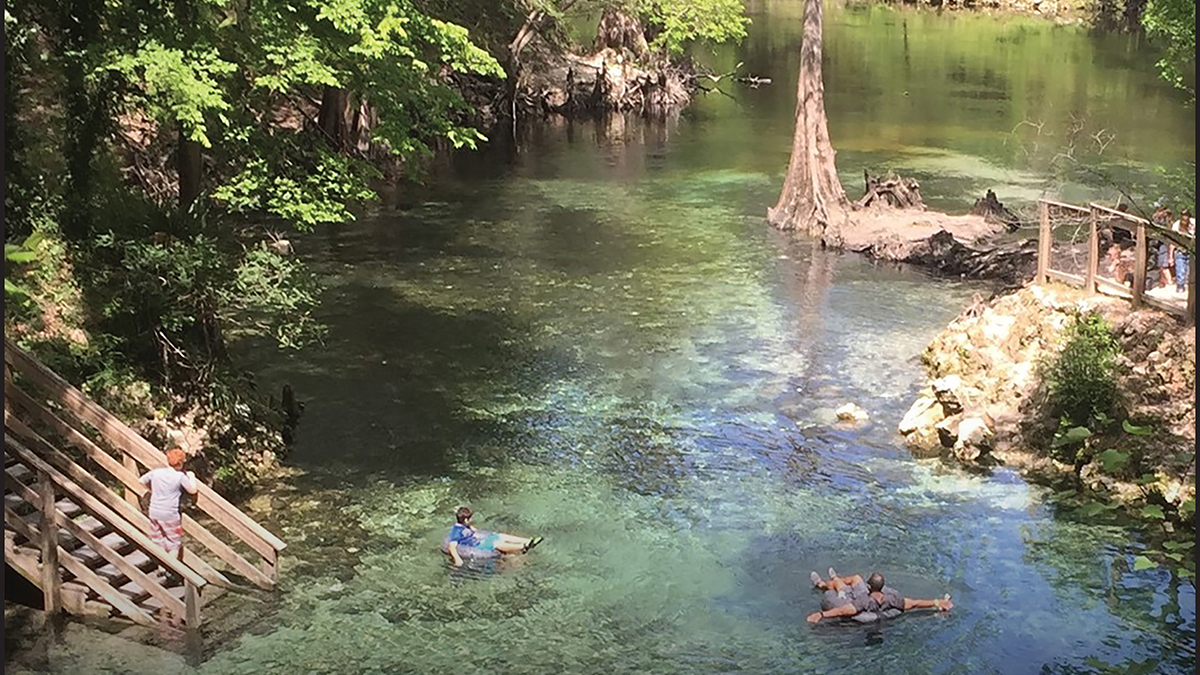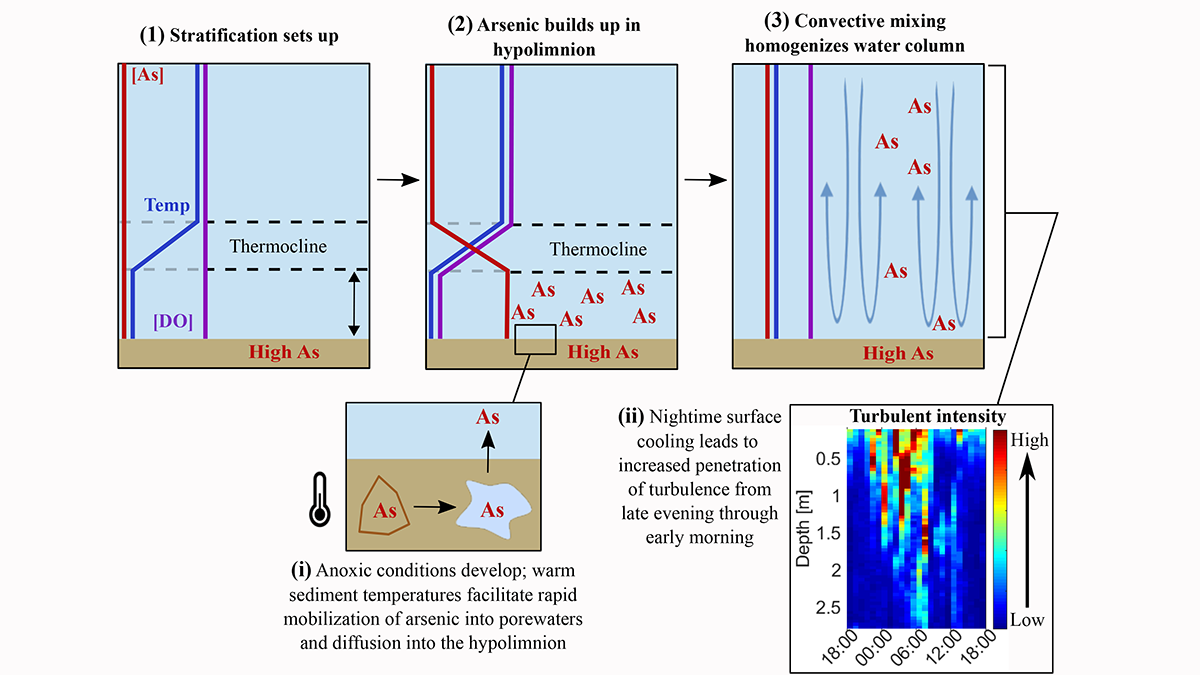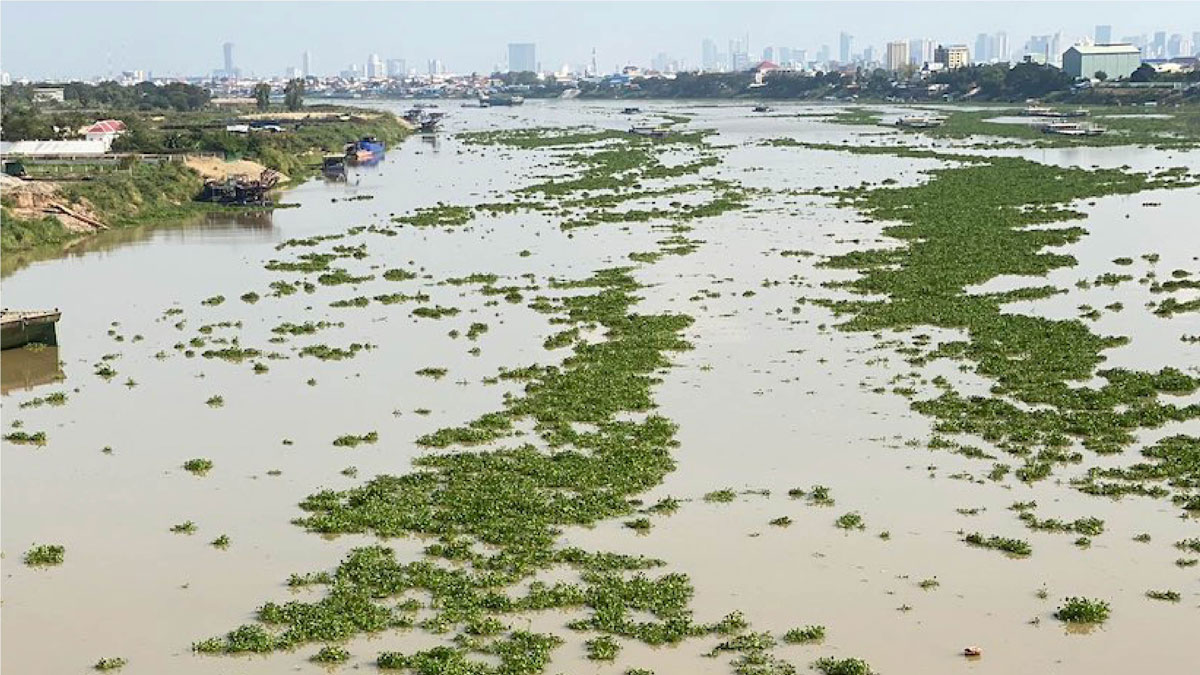A new book explores why springs are critical for humanity and ecosystems, the threats they are facing, and how we can act now to protect and restore them.
water pollution
Understanding Enhanced Arsenic Pollution in Shallow Lakes
A new study explains why the arsenic that has accumulated in lake bottom sediments is more harmful to the lake ecosystems in shallow lakes.
Wetlands on the Farm: Potent, Nutrient-Capturing Tools in (Relatively) Small Packages
Constructed wetlands can significantly reduce water pollution from tile-drained farms.
The Fate of a Lake After a Dramatic Mining Disaster
Researchers tracked long-term sediment dynamics in Canada’s Quesnel Lake following the 2014 failure of a dam that spilled record-breaking amounts of contaminated mining waste.
The Shapes of Shrimp Farms Affect Their Groundwater Pollution
New findings may help decisionmakers optimize shrimp farm layouts, which could help improve coastal water quality.
Remote Sensing Tracks Down “Plastic Plants” in Rivers
Researchers are using remote sensing to track floating mats of plastic trapped in water hyacinth plants.
Uranium Detected in Latinx Communities’ Water Systems
The unsafe contaminant levels could not be attributed to differences in regional geology, water source, or community size. Researchers suggest they are due to a failure of regulatory policy.
Endangered Rivers Plagued by Pollution, Climate Change, and Outdated Management
The annual list of America’s Most Endangered Rivers includes practical calls to action to turn the tide on threatened U.S. waterways.
Cuando los ríos están contaminados, las inundaciones son solamente el primer problema
A medida que las inundaciones aumentan en frecuencia e intensidad, los productos químicos enterrados en los sedimentos de los ríos se convierten en “bombas de tiempo” que esperan activarse.
Community Input Drives Superfund Research
Researchers identified geochemical tracers for lead and investigated Oklahomans’ concerns at the Tar Creek Superfund site.










